The interior
Columns and pillars divide the Duomo into three naves. The ten small apses on both sides once housed Baroque altars, which were destroyed in the late 19th century to bring the Duomo back to its original structure.
- The flooring features exquisite red marble from Prodo, a small town near Orvieto.
- Designed in 1584 by Ippolito Scalza and Cesare Nebbia, the organ is one of the largest in Italy and is played during a wide variety of concerts.
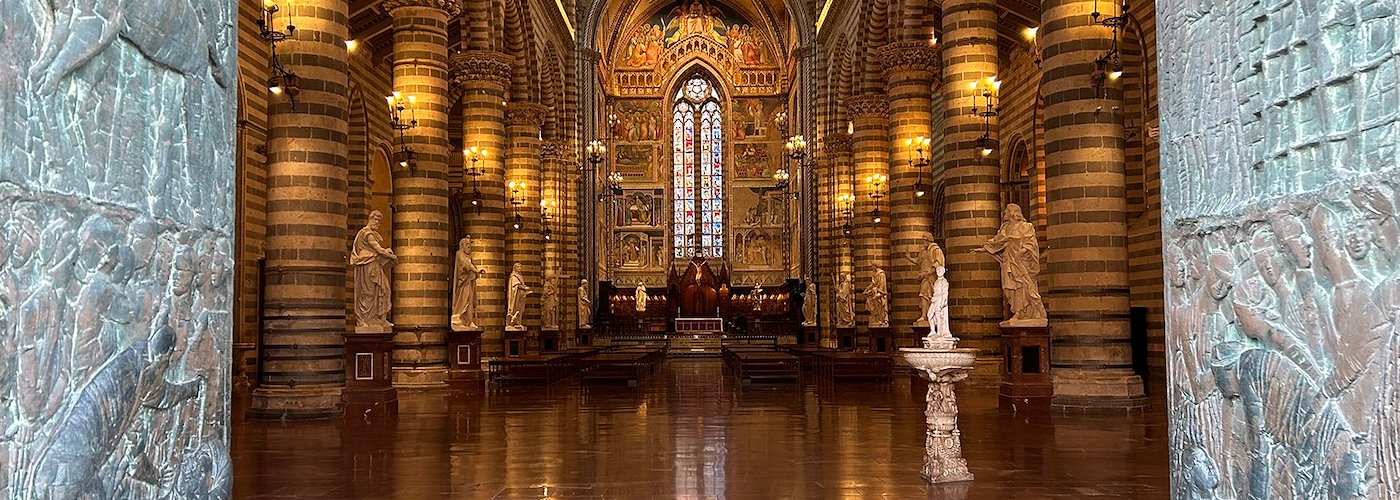
Columns and pillars divide the Duomo into three naves. The ten small apses on both sides once housed Baroque altars, which were destroyed in the late 19th century to bring the Duomo back to its original structure. The alternating shades of basalt and travertine create a striking perspective effect.
Fun facts:
- A series of sculptures was created between the 1550s and 1720s. However, the sculptures and the side altars were removed in the late 19th century to restore the Duomo’s original style. For years, the statues were housed on the ground floor of Palazzo Soliano before being closed in wooden crates in the Duomo’s underground chambers. In 2006, they were displayed in the Church of S. Agostino in Orvieto before returning to the Cathedral in 2019. Here, they were placed in their original location with the help of invaluable late 19th-century photographs.
The organ
Designed in 1584 by Ippolito Scalza and Cesare Nebbia, this organ is one of the largest in Italy. It originally included 13 bellows and 4000 pipes. This instrument is set within a lavish structure of carved, gilded, and painted wood, standing elegantly above the entrance to the Chapel of the Corporal.
The choir
Carved and inlaid by Giovanni Ammannati from Siena and his assistants in the 14th century, it was restored in the 20th century, following the original design. It features three tiers of stalls, including the episcopal chair at the centre. Some original parts are housed in the Opera Del Duomo Museum.
The stained glass windows of the naves
The stained glass windows in the side aisles, featuring saints, coats of arms, emblems, and inscriptions, date back to the 19th-century restoration. They were created in a Neo-medieval style by Francesco Moretti from Perugia, with some windows layered over alabaster panels.
The chancel window
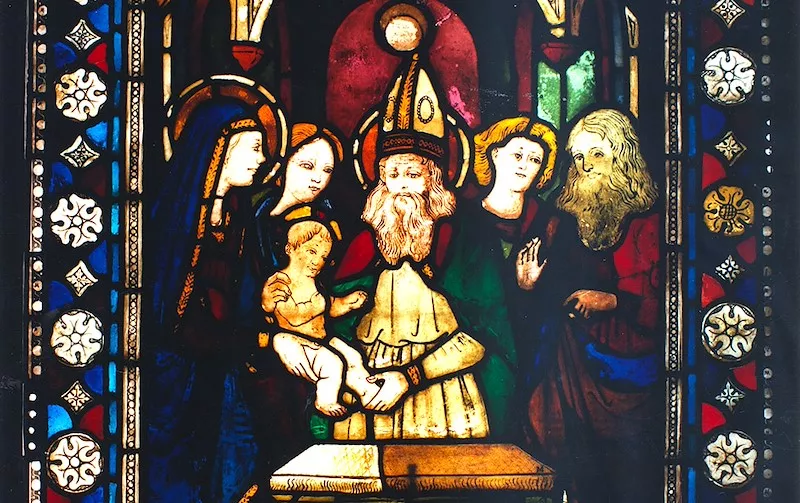
The large 14th-century chancel window by Giovanni di Bonino from Assisi is a stunning Gothic masterpiece. It is divided into 44 rectangles, each representing episodes of Mary’s life.
The apse’s frescoes
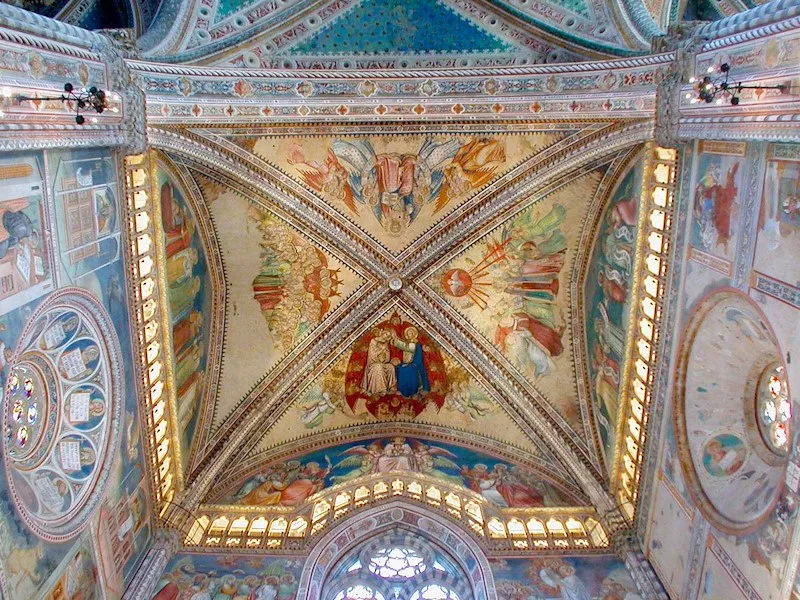
The painting cycle in the apse portrays the Virgin Mary based on the stories told in the Gospels. You can admire episodes of Mary’s life on the walls and her coronation on the vault. The paintings were created by Ugolino di Prete Ilario and his assistants at the end of the 14th century. Later, in the late 15th century, they were restored by Giacomo da Bologna, Bernardino di Betto (better known as Pinturicchio), and Antonio from Viterbo (known as Pastura).
Image gallery
-

-
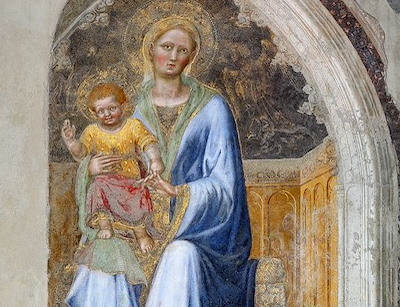
-
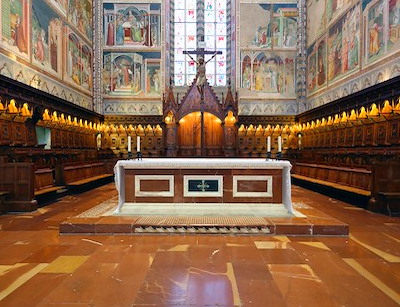
-
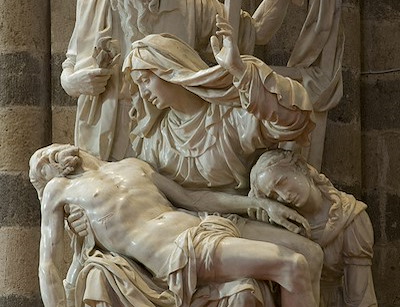
-
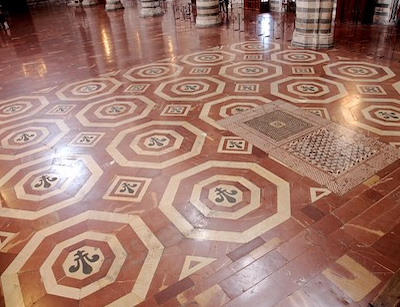
-
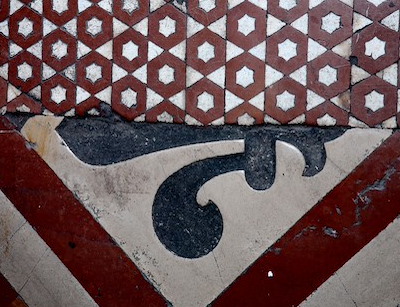
-
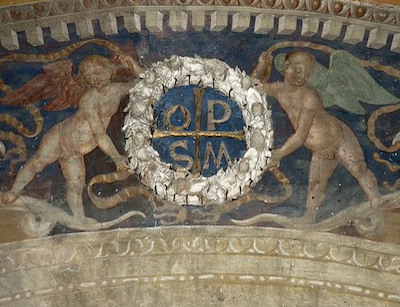
-
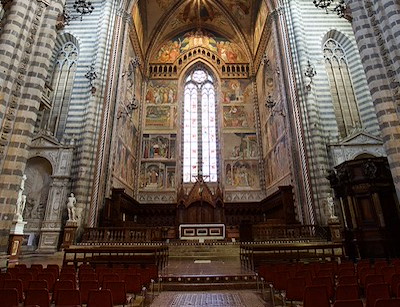
-
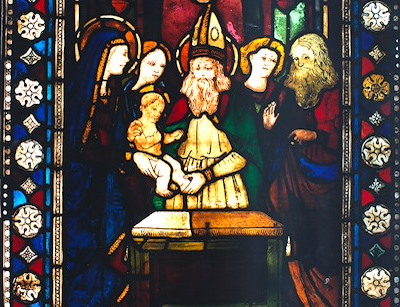 Vetrata Abside - La Circoncisione
Vetrata Abside - La Circoncisione -
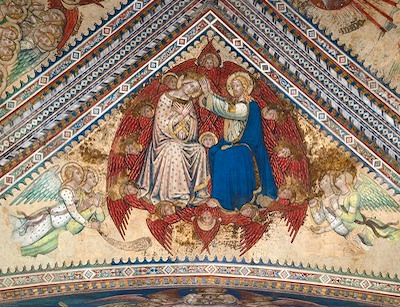
-
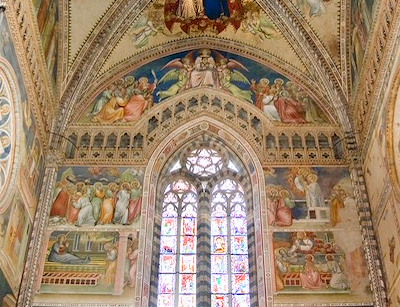
-
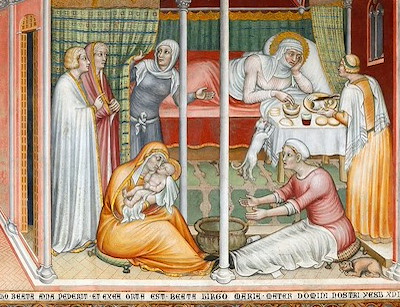
-
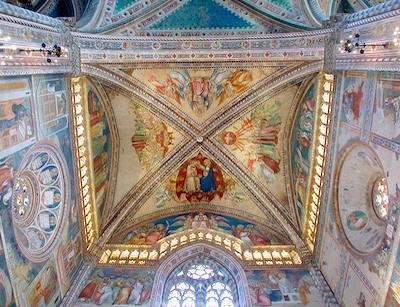
-

Address
Opening times
- November – February 09:30 – 17:00
- March – October 09:30 – 18:00
- April – September 09:30 – 19:00
Sundays and holy days of obligation
- November – February 13:00 – 16:30
- March – October 13:00 – 17:30

 ITA
ITA
